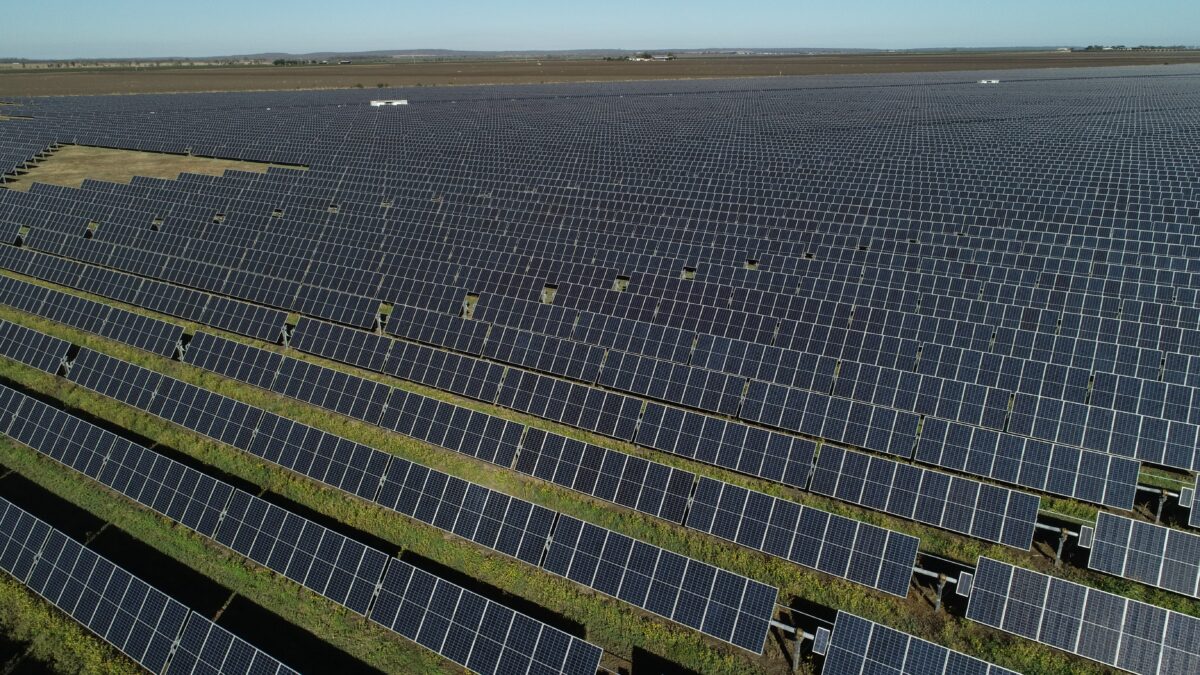Telecommunications giant Telstra announced it has struck a power purchase agreement (PPA) with developer Global Power Generation (GPG) for electricity generated from a 100 MW solar farm to be constructed near Bundaberg on Queensland’s central coast.
Construction of the Bundaberg solar farm is expected to commence in early 2024 with the facility expected to begin operations in late 2025.
Telstra said the offtake agreement will secure up to 153 GWh per annum of renewable energy output to the electricity grid, with the solar farm forecast to generate enough renewable energy to power about 30,000 homes.
Telstra Chief Executive Officer Vicki Brady said the agreement is the sixth clean energy offtake deal the company has signed in recent years as part of the telco’s transition to 100% renewable electricity by 2025.
“Once these projects are fully up and running, our share of their renewable energy output will be equivalent to our own electricity consumption,” she said.
Telstra also has PPAs in place with the 70 MW Emerald and 120 MW Munna Creek solar farms in Queensland. It also has offtake agreements in place with the MacIntyre Wind Farm in Queensland, the Murra Warra Wind Farm in Victoria and the 58 MW extension of the Crookwell Wind Farm being developed in New South Wales (NSW) by GPG.
Brady said Telstra’s investments in renewable energy projects have supported more than $1.2 billion (USD 800 million) worth of projects across Queensland, Victoria and NSW, noting that the PPAs the company has signed will also help support nearly 1,300 local jobs during the construction phase of development and 60 ongoing jobs for regional communities.
“Investments like these also help boost regional employment, with this project expected to create over 100 jobs during the 12-18 months construction phase,” she said.
In addition to matching its electricity consumption with renewable energy, Telstra has also committed to achieve a reduction in its absolute greenhouse gas emissions by 50% by 2030.
“We also have a significant focus on reducing our own emissions and working with our customers, business partners and suppliers to support their emission reduction efforts,” Brady said.
“As of June this year, we have reduced our combined scope 1 and 2 emissions by 30% and our scope 3 emissions by 28%, from a FY19 baseline.”
This content is protected by copyright and may not be reused. If you want to cooperate with us and would like to reuse some of our content, please contact: editors@pv-magazine.com.









By submitting this form you agree to pv magazine using your data for the purposes of publishing your comment.
Your personal data will only be disclosed or otherwise transmitted to third parties for the purposes of spam filtering or if this is necessary for technical maintenance of the website. Any other transfer to third parties will not take place unless this is justified on the basis of applicable data protection regulations or if pv magazine is legally obliged to do so.
You may revoke this consent at any time with effect for the future, in which case your personal data will be deleted immediately. Otherwise, your data will be deleted if pv magazine has processed your request or the purpose of data storage is fulfilled.
Further information on data privacy can be found in our Data Protection Policy.